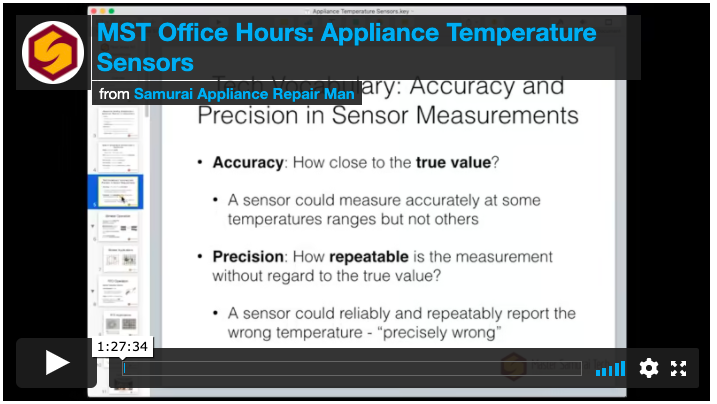NTC Thermistors: What Are They, How Do They Work, and How Do They Fail?
Anytime you work on a refrigerator with a control board, you've got multiple NTC thermistors in play. With how ubiquitous these devices are, it's important to know them inside and out -- especially how to test them. That's why we've made a webinar all about NTC thermistor technology for your viewing pleasure!
In this short excerpt from one of our many technical training webinars, we cover topics like:
- What is an NTC thermistor used for and where will you find them?
- What does NTC mean?
- What does an NTC thermistor graph look like and how do you use it?
- How doe NTC thermistors fail?
Watch it now for free!
Want to watch the full webinar? Click below -- viewable only by premium members.





10 Comments
Recommended Comments